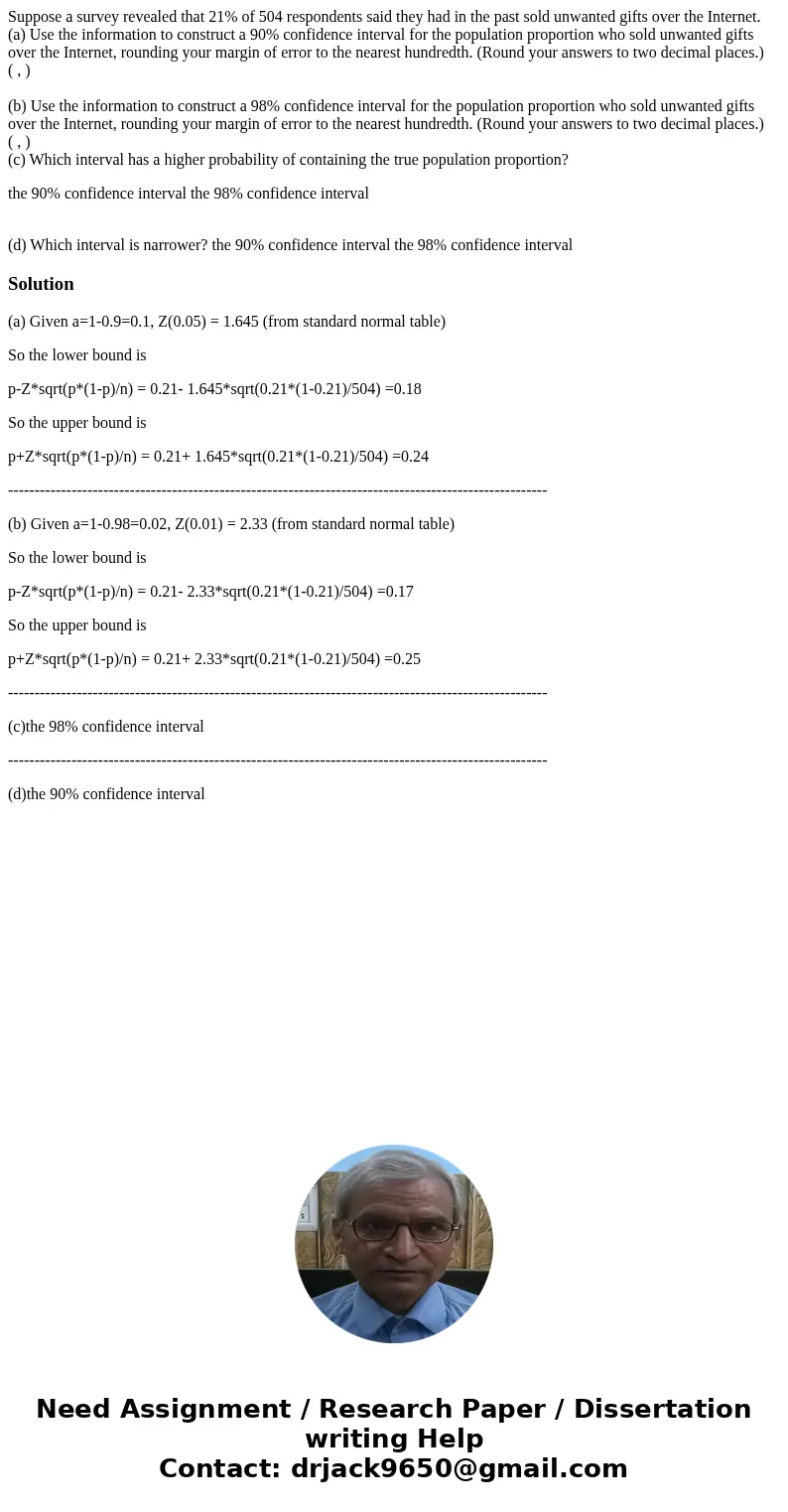Suppose a survey revealed that 21 of 504 respondents said th
Suppose a survey revealed that 21% of 504 respondents said they had in the past sold unwanted gifts over the Internet. (a) Use the information to construct a 90% confidence interval for the population proportion who sold unwanted gifts over the Internet, rounding your margin of error to the nearest hundredth. (Round your answers to two decimal places.)
( , )
(b) Use the information to construct a 98% confidence interval for the population proportion who sold unwanted gifts over the Internet, rounding your margin of error to the nearest hundredth. (Round your answers to two decimal places.)
( , )
(c) Which interval has a higher probability of containing the true population proportion?
the 90% confidence interval the 98% confidence interval
(d) Which interval is narrower? the 90% confidence interval the 98% confidence interval
Solution
(a) Given a=1-0.9=0.1, Z(0.05) = 1.645 (from standard normal table)
So the lower bound is
p-Z*sqrt(p*(1-p)/n) = 0.21- 1.645*sqrt(0.21*(1-0.21)/504) =0.18
So the upper bound is
p+Z*sqrt(p*(1-p)/n) = 0.21+ 1.645*sqrt(0.21*(1-0.21)/504) =0.24
------------------------------------------------------------------------------------------------------
(b) Given a=1-0.98=0.02, Z(0.01) = 2.33 (from standard normal table)
So the lower bound is
p-Z*sqrt(p*(1-p)/n) = 0.21- 2.33*sqrt(0.21*(1-0.21)/504) =0.17
So the upper bound is
p+Z*sqrt(p*(1-p)/n) = 0.21+ 2.33*sqrt(0.21*(1-0.21)/504) =0.25
------------------------------------------------------------------------------------------------------
(c)the 98% confidence interval
------------------------------------------------------------------------------------------------------
(d)the 90% confidence interval

 Homework Sourse
Homework Sourse